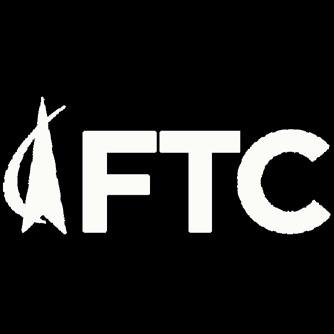NOVEMBER/DECEMBER 2025

Chain saw artist carves out his niche


NOVEMBER/DECEMBER 2025

Chain saw artist carves out his niche

By Shirley Bloomfield, CEO NTCA–The Rural Broadband Association Professionally
NTCA members are committed to your safety
As we enter the holiday season, it is an opportunity to acknowledge a group of professionals you may not realize is working diligently behind the scenes to make this season—as well as every month of the year—enjoyable and safe.
Many of you stream movies, music, short videos or interactive games, and there’s always online shopping. NTCA members provide rural communities with the networks vital for all of this and so much more, from banking to education, telehealth and beyond.
Unfortunately, online risks do exist. Scammers may try to capture your personal information, or malicious websites might lead to insecure transactions. There are even attempts to disrupt the infrastructure itself.
Monitoring threats and vigilantly updating everything from software to security strategies is central to the day-today job of rural broadband providers. To help with this, NTCA created CyberShare: The Small Broadband Provider ISAC, an information-sharing network that allows participating providers to collaborate and share critical information. Whether it’s learning about vulnerable equipment, software exploits, recent cyberattack attempts or mitigation strategies, this information sharing helps members proactively strengthen their defenses to keep you and your family safe online.
You play a role, too. When you’re shopping online, make smart choices, such as relying on websites with addresses that begin with https, shop on well-established sites and lean on strong, secure passwords. Together we can enjoy happy, safe holidays.

While mobile payment apps like PayPal or Venmo make it easy to send and receive money online or through an app on a phone, scammers are also waiting to take advantage.
This service becomes an intermediary between your money and whoever is on the other end of a transaction, which can create an added layer of security.
But if a scammer tricks you into sending money, it’s hard to get it back. The Federal Trade Commission notes the risks and offers tips for staying safe.
• Don’t send a payment to claim a prize or collect sweepstakes winnings.
• Never give your account credentials to anyone who contacts you.
• Protect your account with multifactor authentication or a personal identification number.
• Before paying, double-check the recipient’s information to make sure you’re sending money to the right person.
• If you get an unexpected request for money from someone you do recognize, speak with that person directly to make sure the request really is valid, not a scam by a hacker who got access to their account.
If you find unauthorized payments or think you paid a scammer, immediately report the transaction to the service providing the payment app. Instructions should be available on the service’s website. Also, report the scam to reportfraud.ftc.gov.
Looking for that gift that keeps on giving long after they’ve tossed the wrapping paper and bows? With a little online exploration, a nontraditional gift is out there for just about everyone on your list.
Just like movie and music services, game subscriptions offer unlimited access to huge catalogs of titles for players who would rather not put up the $70-$80 average price for each individual game. Paying a part of the most popular subscriptions—Xbox Game Pass at $9.99-$19.99 per month, PlayStation Plus at $17.99 or Apple Arcade at $6.99—is a great way to show your gamers some love.
Video game streaming involves broadcasting live gameplay over the internet, allowing viewers to engage with and watch other players in real time. Like livestreaming on Facebook and TikTok, game streamers provide content for viewers worldwide, playing video games and offering commentary.
Twitch is by far the most popular service, with more than 240 million monthly subscribers who play, watch, create content and follow other gamers. Three subscription tiers with different levels of perks range from $4.99 to $24.99 per month. Steam is also huge. Discord, Kick, Caffeine and DLive are other popular choices for gifting your interactive gamers, just confirm the platform they prefer so you’re sure to get them a gift they can use.
With a quick internet search, you can set
up a monthly delivery of everything from pickles to pet chews to bath gels, bacon and beyond. Look at sites like Amazing Clubs or Month Club Store to find multiple choices in one spot.
A monthly themed box or crate can satisfy all ages, from educational toys at Crunchlabs and a monthly Lego set through Brick Loot to a spa-in-a-box from Therabox. Visit Cratejoy for a wide selection.
Consider a gift subscription to Dear Holmes, which mails weekly clues on fancy stationery for solving a Victorian-era crime. For $50, six months’ worth of mysteries will turn your person into a solo Sherlock or the leader of a team of Watsons who share stories on YouTube.
You’ve no doubt noticed the columns of gift cards at your supermarket or drugstore. They look like colorful credit cards, and that’s exactly what they are. These pieces of plastic can be applied toward almost anything from cash to food delivery services. The easiest way to give something everyone wants and by far the simplest to ship, gift cards are expected to generate $447.1 billion in revenue this year.
You can grab gift cards toward recurring subscriptions, like a movie or music streaming service. You’re sure to earn points by gifting a part of the monthly Netflix or Hulu charges. Or find a Spotify, Apple Music or SiriusXM gift card and keep the happy tunes flowing all year.
Stick to stores you know and trust. Avoid buying online where shady sellers may promote fake or stolen gift cards.
Avoid cards with signs of tampering.
Pay with a credit card if possible. If you run into problems and have to file a chargeback, your credit card company will investigate.
Consider using the gift card quickly to avoid potential inactivity fees or issues like business closure.
Keep copies. If the gift card doesn’t work, the number on the card and store receipt will help you file a report with the Federal Trade Commission at reportfraud.ftc.gov.
Earlier this year, I noticed a minor clerical error while reviewing some member communication documents set to go to print. By the time I noticed the error, it was too late to correct it. As we discussed the matter internally, it was evident to me that the mistake wasn’t due to carelessness or negligence. I know the folks responsible for these communications, and they are a professional, dedicated and diligent bunch. They are also human. Reflecting on the events of that day, I was reminded of a personal experience from over 20 years ago.

PAUL HIGDON Chief Executive Officer
Those who know me know I love to fish. I grew up in a home where time outdoors was valued and with a daddy who taught me to catch them. I still value the time I get to spend on the water as it’s a consistent stress-reliever for me.
I was off work this day and was determined to go to the river. I arrived at the boat ramp at daylight that late-winter morning itching to hit the water. I quickly unloaded the boat, parked the truck and jumped into the starboard side of that old Skeeter. I turned the key as I’d done many times before, but the ignition wouldn’t fire. I tried and tried until I had drained the cranking battery of all its might.
I ran, literally, to the store across the road and bought a new battery thinking that was the problem. I replaced the old battery only to be met with the same results. The motor still would not crank. About this time, an older gentleman approached the dock and observed my situation. He kindly told me to “check the kill switch” and kept on his way. I did, returned it to the “on” position and tried again. The motor immediately fired.
While I was relieved to get to fish that day, I couldn’t hide my embarrassment. Hat in hand, I thanked the man as he was walking to his truck. He turned to me and said, “Son, if you haven’t ever messed up, you haven’t tried to do much.” I wish I had gotten his name. I went on to have a great day on the water even though I’d spent more than my minnow money allowance on a battery I didn’t need.
I share this experience with you because it has been a consistent reminder of my own fallibility and the impact some understanding and timely wisdom can have on others in their time of need. The gentleman who helped me that day did not scold me for the oversight nor did he grab his phone to document my dilemma for the next episode of boat ramp fails on YouTube. He simply offered me some advice he knew I needed and went on his way. He also left me with the above quote that I’ve since used with my own sons.
We try hard to serve you at an elite level. The men and women who comprise our workforce are exceedingly aware of what’s at stake with your connection to the world and care deeply about keeping you connected. While we won’t ever be perfect, you can trust that we’re striving “to do much” on your behalf every time we’re presented with the opportunity to serve.
Thank you for your support in allowing us to serve you. I hope you all enjoy the upcoming Thanksgiving and Christmas seasons with those you care about most.

FTC is the state’s largest member-owned provider of telecommunications services. It serves Northeast Alabama with a robust broadband network using world-class optical fiber technology.
Telecommunications Cooperative, Inc.
P.O. Box 217 • 144 McCurdy Ave. N. Rainsville, AL 35986
Telephone: 256-638-2144 farmerstel.com
Randy Wright, President Flat Rock Exchange
Garry Smith, Vice President Fyffe Exchange
Danny R. Richey, Secretary Geraldine Exchange
Lynn Welden, Treasurer Bryant Exchange
Kenneth Gilbert Pisgah Exchange
Gregg Griffith Henagar Exchange
Randy Tumlin Rainsville Exchange
On the Cover: Steve Baumgartner started carving with chain saws in 2018. He has carved many art pieces since making his first two bears. See story Page 12.

This year’s Annual Meeting of the Members—the first with new CEO Paul Higdon—set a new attendance record with 2,456 members taking part. FTC thanks all the members who came out.
“The cooperative would not be what it is today without your continued support and participation,” Paul says. “We have much to be thankful for, and we look forward to continuing to serve our members with dedication and care.”
Board of trustees members Randy Tumlin, representing Rainsville, and Garry Smith, representing Fyffe, were both reelected.
The grand prize, a 2015 Chevrolet 1500 4x4 truck, went home with Ben and Bambi Luther.
Other winners include: Shirley Banther, Raycon earbuds/Spotify gift card; Kay Etherton, Family First Medicine Spa gift card; Andrea Williams, Ninja hot and cold tea and coffee maker; Kyle Pike, Tramontina cookware set; Eva Mendez, Samsung 55-inch smart TV; Tammy Robinson, Blackstone four-burner 36-inch outdoor griddle; Hitesh Patel, $500 Foodland gift card; Riley Lee, one year of FTC Total Connect Security Service; and Misty Williams, one year of Gig internet service.
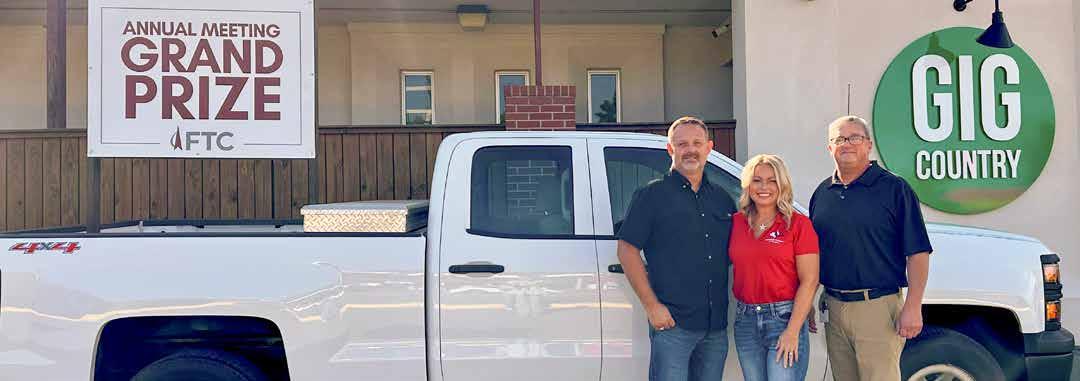
Help is available to cover the cost of internet service for eligible households. FTC is proud to take part in a government assistance program administered by the Federal Communications Commission.
Lifeline Assistance Program
What is it?
Lifeline is a government assistance program dedicated to making phone and internet services more affordable for income-qualified households. This benefit provides eligible consumers a $5.25 monthly discount for local voice-only telephone service and a $9.25 monthly discount for stand-alone broadband internet access service or broadband internet access service as part of a bundled package.
Who is eligible?
Customers who have an annual household
income at or below 135% of the Federal Poverty Guidelines for a household of its size OR who participate in any of the following programs:
• Supplemental Nutrition Assistance Program, formerly known as Food Stamps
• Medicaid
• Supplemental Security Income
• Federal public housing assistance
• Veterans Pension and Survivors Benefit
Learn more at lifelinesupport.org/get-started or farmerstel.com/lifeline.
Note: FTC is not responsible for determining who qualifies or who receives assistance. Consumers must meet specific criteria in order to obtain assistance with their local telephone and/or broadband service, and qualification depends on government-established guidelines.
FTC’s office will be closed on the following dates to allow employees to celebrate the holidays with their families.
Veterans Day—Tuesday, Nov. 11
Thanksgiving—Thursday, Nov. 27, and Friday, Nov. 28
Christmas— Wednesday, Dec. 24, and Thursday, Dec. 25
New Year’s Day—Thursday, Jan. 1
For assistance on these holidays, call 866-638-2144.

by KATHY DENES

Ready to take a lap around the “The World’s Fastest HalfMile” illuminated by 3 million Christmas lights? For the 29th year, Tennessee’s Bristol Motor Speedway and Dragway is inviting the public to come celebrate the season.
The route of the 4-mile-long Food City Speedway In Lights powered by TVA starts at Bristol Dragway, entered off Highway 394. About midway through, drivers enter the iconic “Last Great Colosseum” and circle its half-mile concrete oval. After taking that memorable lap, guests can park inside the track and treat the family to the Christmas Village, presented by HSN.
The Christmas Village, adorned in holiday decor, includes Santa’s Hut, where kids get the chance to meet the jolliest old elf. There are also carnival rides, vendors offering Christmas crafts and treats, a tubing slide and a snow maze.
After enjoying all the village has to offer, guests will get back in their vehicles and continue the drive, which concludes at the Dragway entrance.
Finishing the drive doesn’t have to mean it’s time to leave the speedway, though. Adding to the holiday sparkle is the Tri-Cities Airport Ice Rink at Bristol


Motor Speedway, presented by Stateline Services and touted as the region’s best and longest-standing ice rink Visitors can enjoy skating daily from Thursday, Nov. 20, through Sunday, Jan. 11, 2026 Admission is $12 for guests who bring their own skates or $15 for those who need to rent them.
The 120-by-60-foot ice rink is covered by a tent at the speedway’s North Entrance. Promotional nights and special events are offered, such as College Nights at the Ice Rink. On Tuesdays, students who present their valid college IDs at the ticket booth will get a free skate rental.
Proceeds from the Speedway In Lights and affiliated events benefit Bristol Speedway Children’s Charities, which funds agencies that have helped thousands of children. The charity was founded in 1996 when Bristol Speedway became part of Speedway Motorsports, which has a Speedway Children’s Charities chapter at each of its 11 racing venues.
quickly got the green light from track owner Bruton Smith. To date, thanks to the Christmas event and others throughout the year, the charity has distributed nearly $20 million.
“Speedway In Lights is not only the flagship fundraiser for Speedway Children’s Charities but a tradition for so many in the Tri-Cities region,” says Betsy Holleman, the charity’s senior manager for development and events. “The event has accounted for a third of our annual budget for over 25 years. It’s an opportunity to bring family out for an evening of Christmas fun, while supporting kids in our area.”
Speedway In Lights begins on Friday, Nov. 21, and continues daily from 6-10 p.m. into the new year, concluding on Saturday, Jan. 3


Claudia Byrd, the executive director of the Bristol chapter, was charged with coming up with a signature fundraising event. Inspired by her family’s tradition of enjoying holiday light displays in her hometown, Claudia suggested the speedway present a Christmas lights show. It
Prices for cars range between $25-$35. Vans are $85, and buses are $150. Visitors can take advantage of Fast Lane presented by Citi, a speedy $75 option that provides a shorter wait time on select nights when traffic lines get long.
For details about Fast Lane presented by Citi and all other Speedway In Lights event and pricing updates, go to bristolmotorspeedway.com.














Story by MELANIE JONES
Individuals who walk into the Hope Center in Fort Payne seeking help, they find nicely upholstered chairs on which to sit and wait, soothing art on the walls and, most of all, hope for a brighter future.
The Hope Center, Medical Center and Hope House—all part of Marked for Life Ministries—serve people at some of the lowest points in their lives. Some are experiencing homelessness. Some struggle with addiction. Others can’t afford their prescriptions or a doctor’s visit for minor illnesses. Still more face food insecurity.
Marked for Life Ministries Executive Director Logan LeGrande wants the neighbors—who some agencies call clients—to feel special and worthy.
“It’s about dignity,” he says. “I want them to feel wanted.”
Marked for Life operates differently than many crisis service centers. Neighbors don’t just stop in once a month for a bag of food and a couple of outfits. Ministry staff and volunteers want the people they work with to become
self-sufficient. To that end, there’s a social worker on staff to help set up neighbors for success. The ministry provides job training and counseling and teaches financial skills. It meets immediate needs while helping with long-term goals.
The ministry also completes four major Deliver Hope Projects each year, powered by more than 500 volunteers and 50 churches. Love Night is a special event, offering support and community for single mothers and widows. For its Backto-School Outreach, the center provides

by
more than 500 filled backpacks, as well as haircuts for students.
At Thanksgiving, the ministry’s Baskets of Blessings feed over 1,500 neighbors. For Hope on Christmas, the ministry serves about 150 kids, who don’t get just one toy each. “We want to give them all a whole Christmas,” Logan says. Each child gets 10 to 15 presents, and families also enjoy a full meal.
Personal history drives Logan’s mission to provide help, faith and self-sufficiency. “I grew up with a father and stepfather living in addiction,” he says. “We stood in a lot of food bank lines, but none of them transformed their lives.”
As a result, he knew he had a deeper mission in life—a mission to introduce
others to God, who he says is in the transformation business.
Logan strongly believes people can change, and faith in God is what powers the ministry. “Even if you have nothing, you have God,” Logan says. “He’s there in the darkest of valleys and the highest of mountains.”
Logan wants to meet people in those dark valleys and help them reach the high mountains. That, he says, is where lives are transformed.
For more on volunteering, donating or receiving services, go to mflm.org.
RIGHT: Logan considers baptism one sign of success with neighbors and residents.
BELOW: Marked for Life delivers gifts to widows the week of Valentine’s Day.
DeKalb County has a larger population of people experiencing homelessness than most residents realize, Marked for Life Ministries Executive Director Logan LeGrande says. There are folks living on the streets, but there are many others who sleep in their cars or go from couch to couch.
Marked for Life Ministries bought the Mountain View Motel and transformed it into a program offering clean, well-appointed individual rooms for men in need.
The dignity approach at the Hope Center continues at Hope House, which opened in November 2024 as a transitional living facility for men. There, each man has his own nice room with a king-sized bed. “That was a deliberate choice,” Logan says. “We wanted them to feel like kings, like they are worthy, that they have dignity.”
But the ministry wants to do more than provide shelter, it wants to provide hope. It’s dedicated to serving those seeking to better themselves, Logan says.
The 12-room transitional home has four phases. In Phase 1, residents volunteer with Marked for Life Ministries, attend church, discipleship and life skills classes and work on their personal development. They also go to job-training classes at Northeast Alabama Community College.
In Phase 2, they focus on finding jobs. The ministry doesn’t accept any of the residents’ wages to pay for its services. “We want them to focus on saving money,” Logan says.
After buying a car, residents come to the third phase, finding permanent housing. The fourth step is to maintain a relationship with the Hope Center, not only so the center can track their progress, but also to inspire others.
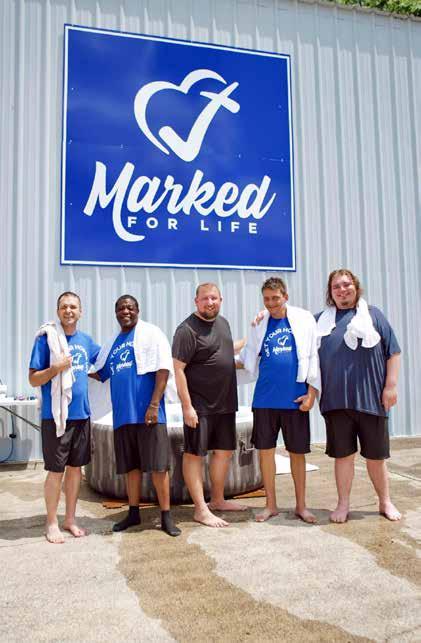
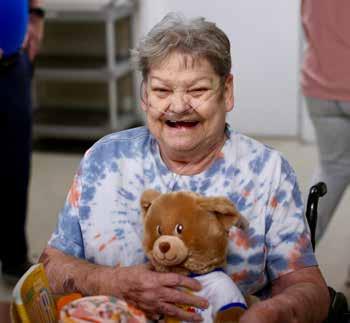
In 2024, Marked for Life Ministries handled more than 657 crisis appointments. Last year alone the organization:
• Touched 5,000-plus lives through local outreach
• Served 81 patients at the Medical Center
• Filled 65 prescriptions
• Answered 8,207 crisis calls
• Worked 20,000 volunteer hours
• Rescued 20,598 pounds of food from local restaurants and stores that would have otherwise been wasted
• Saw 75% of program participants experience positive outcomes
Source: Marked for Life Ministries

Pets for Vets is a four-star rated, not-for-profit organization that relies on donations to provide free services to veterans. There are several ways to donate.
Donate online: Visit petsforvets.com/donate to make a secure online donation.
Donate by mail: Pets for Vets Inc., P.O. Box 10860, Wilmington, NC 28404.
Story by JEN CALHOUN
When Clarissa Black first took Bear, her huskymalamute, to visit patients at a Veterans Administration medical center, she had no idea he was about to change hundreds of lives.
Of course, she knew Bear was special. He had a way about him. When someone needed quiet company, Bear could lie perfectly still for hours. If someone was working on mobility, Bear would position himself at the perfect distance, paws up, as if to offer encouragement. And when people looked into the dog’s eyes and spoke to him, he’d cock his head and let out one of his husky “woos” right on cue.
“People really felt like he was talking to them,” says Clarissa, whose background in animal science and anthrozoology gave her a deeper insight into the interactions.
“They felt seen, and they felt heard.”
Clarissa’s experience with Bear at the VA hospital sparked the idea for Pets for Vets, a nonprofit organization that matches veterans with specially trained companion animals. Since she founded it more than 15 years ago, the organization has matched more than 800 animals with veterans.
Other ways to give: The organization also accepts cryptocurrency and vehicle donations that include cars, trucks, boats and motorcycles.
Volunteer: Fill out the volunteer form at petsforvets.com to offer your time and expertise.
For more information about the program, or to apply for a companion animal, visit petsforvets.com or send an email to contactus@petsforvets.com.
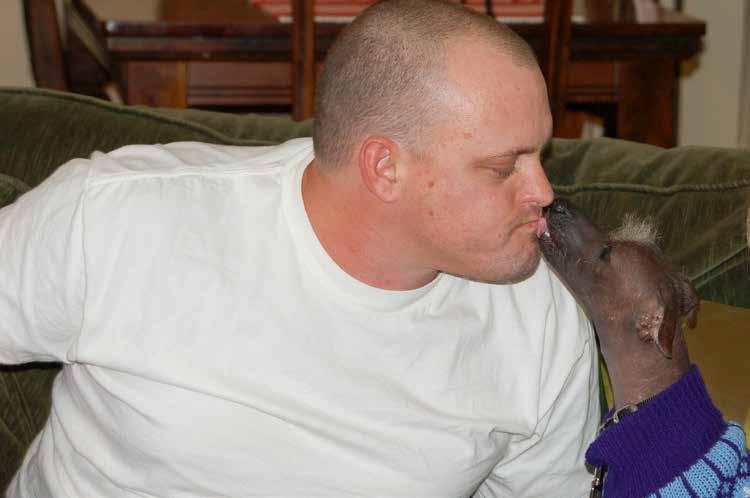
After Leif Mesinger returned home from Iraq, the world felt different. It was harder to navigate and harder to understand. The Army infantryman and gunner suffered a traumatic brain injury from an improvised explosive device blast, and it changed everything.
“My mind was racing, and I struggled to communicate,” Leif says in a Pets for Vets testimonial video. “I felt disconnected from everything I used to know.”
But help arrived in the form of a tiny, hairless waif of a dog named Spyder. Clarissa Black, founder of Pets for Vets, discovered the dog after meeting with Leif and finding out what he needed in a companion animal.
Spyder’s superpower was that he loved to jump into people’s laps and lick them. It was a trait Clarissa intentionally honed in Spyder before presenting him to Leif. She knew that kind of gentle, rhythmic contact could ground a person dealing with anxiety.
In time, Spyder’s constant presence gave Leif a growing sense of purpose and a deepening bond. Thanks to his more than 15 years with Spyder, Leif’s communication with others has improved and his life is more fulfilling than ever. “Spyder was kind of like that saving grace that centered me again and brought me back,” he says.
The program generally serves veterans dealing with post-traumatic stress disorder and traumatic brain injuries, but the organization is open to helping any vet who could benefit from a deep connection with a pet. And while the service is completely free to the veterans, it relies on donations from the public and a network of more than 100 volunteer animal trainers across the country.
It’s important to note that Pets for Vets animals aren’t service dogs that have been highly trained to assist people with disabilities. Still, the organization works hard to meet the veterans’ needs as well as the animals’.
“We’re not just asking what the dog gives the veteran,” Clarissa says. “We want to know what the veteran gives the dog.
LEFT: Spyder’s tendency to jump in laps and lick faces helped calm and center Leif Mesinger when he became frustrated.
OPPOSITE PAGE: Clarissa Black, founder and executive director of Pets for Vets, with her late dog, Bear, who sparked the idea for the not-for-profit organization.
We’re looking for that reciprocal match where both are getting exactly what they want.”
Once the group approves a veteran’s application for a companion animal, the search gets underway. Clarissa’s experience as a marine mammal trainer taught her the most powerful relationships happen when both parties get exactly what they need. The process isn’t about finding a good dog. It’s about finding exactly the right dog.
The matching process is not only thorough, it’s personal. Veterans work closely with trainers to identify their needs and prepare for pet ownership. “We spend a lot of time getting to know our veterans, finding out what it is they need, what they’re looking for and what would be a good fit for them,” she says.
Meanwhile, trainers visit shelters and rescue groups to conduct one-on-one “interviews” with potential animal companions, which can include cats, rabbits and other species, as well. If a veteran enjoys outdoor activities, for example, the trainer might look for a more active dog that loves to fetch and hike. On
the other hand, a more sedentary vet might need a peaceful pooch or calm cat.
From there, each animal undergoes foundation training customized for its future human. During this time, which often takes place in a foster situation, trainers enhance what Clarissa calls the animal’s “superpowers,” or the natural behaviors that made them perfect for their veteran in the first place.
“We’re really trying to make this connection where both are getting exactly what they want,” she says. “Ultimately, that connection is what’s going to fulfill them and maybe even heal them. There’s some research out there that suggests that it’s not just any dog, it’s the right dog––the dog that people feel connected to––that can help mitigate anxiety and depression.”

Story by MELANIE JONES
Steve Baumgartner discovered his hobby among the shrieks of joy and the smell of fresh funnel cake during a trip to Dollywood. The Fort Payne resident watched in wonder as a man used a chain saw to carve a bear. “I thought about it and decided I could make one just as good,” he says.
Having grown up around the timberland and sawmills of Michigan’s Upper Peninsula, Steve knew the characteristics of wood and how to manage a chain saw. So, he went home after that 2018 trip and gave it a shot. “I carved a bear, and it was good. Then, just to make sure it wasn’t beginner’s luck, I carved another one,” he says. “It was good, too.”
Fast forward seven years, and Steve and his chain saw have carved dozens of life-sized bears and plenty of smaller creatures. He also carves miniatures with a chip carving knife.
His tallest sculptures are grizzly bears standing 6 to 7 feet tall. But he also used a chain saw to carve a rabbit that was small enough to fit in his young daughter’s backpack as a gift for her teacher. “The important thing is getting the scale right,” Steve says. “Large or small, if you don’t get the scale correct, it looks bad.”
Chain saw carving calls for more than an artistic eye. It also requires physical strength.
“It’s not a hobby for the faint of heart,” Steve says. “It strains on the forearms, the back, the legs. It’s a full-body workout.”
As he gets older, Steve has come to rely on the work smarter, not harder approach. He invested in a lift table so he’s not always bending over to carve, and he bought a winch to make it easier to load the sculptures onto a truck or trailer.


“I try to take care of myself more,” Steve says. He wants to continue carving for years to come.
The carving process is so physical because the pieces Steve creates are so large. One of his biggest works is the eagle sculpture that greeted Geraldine School students on the first day of the new school year. Made from reclaimed wood, the piece depicts two nesting eagles. The school used the sculpture to create lesson plans for all ages. The youngest students created their own eagle artwork while the older kids took inspiration to study the ecosystem and the world around them.
One day, perhaps, the right art enthusiast will come along with a place for the massive piece. “You don’t just go into a shop and expect to find that big of a sculpture,” Steve says. “It’s much more useful at the school than sitting in my garage.”
After the display at the school ended, it was moved to The Little River Canyon Center in October.
Early in his carving days, Steve created a beaver sculpture that still ranks as one of his favorites. “It looked like something no one else had done,” he said. He didn’t go by a photo, he just depended on his mind and his hands and, of course, the chain saw.
He was pleased to send the beaver to a gallery, where it’s waiting to find a buyer. “I liked it, but apparently, no one else did,” Steve says with a self-deprecating grin.
A sculpture of a bald eagle sitting on a scroll of the Declaration of Independence pleases both Steve and the public. He considered printing the Declaration of Independence and adhering it to the sculpture in some way but ended up writing it by hand. “I liked it for two reasons,” Steve says. “One, it was fun to do, and
two, I enjoyed writing it. I had never read the declaration in such detail before.”
The sculpture sold as soon as it went on display, and Steve carved a second one.
Steve sells his work at Boomtown Makers Market in Fort Payne and River’s Edge Gallery in Scottsboro. Both stores are great to work with, he says.
“Darlene has a passion for art that shines through,” he says of Boomtown’s owner Darlene Rotch.
He also accepts commissions, and that has kept him busy of late. “I do about one a month,” he says, and that includes sculpting decor for the porches of two houses in Mentone.
He put a limit on his commissioned art because he’s too busy to meet all requests. “I have three kids, a job and a hobby,” he says. The artist’s full-time job is in an office at Heil in Fort Payne.
Having FTC’s fiber internet service allows Steve to manage his Facebook page, UP North. “I keep it as like a library or log of my work,” Steve says. There, potential buyers can see what he’s capable of and find what they would like, perhaps modified a bit.
While he may carve some things like bears repeatedly, each one is still unique. For one thing, Steve is always practicing and trying new things. For another, you can’t create exact duplicates when a piece is made by hand—or chain saw.

Turkey, ham, lamb—tradition gives them all a place on the holiday table. But gather the family together for a pizza party, and you can roll out a whole new tradition. Make your own pizza dough with just a handful of ingredients, and you’ll know that there are no preservatives and other unhealthy additives. For a family affair and fun for the kids, create a bar with pizza toppings—pepperoni, sausage, onions, peppers, cheese and the like—and let them make their own.
A preheated pizza stone will crisp the crust, but a cookie sheet also works.
A pizza salad with Italian herbs and a creamy vinaigrette dressing is the perfect pairing.
A dessert pizza with fresh berries and other fruits available year-round delivers a refreshing finish. Make the crust the day before and layer on the cream cheese spread. But wait until shortly before serving to add the fruits so they will stay colorful and fresh.

Food Editor Anne P. Braly is a native of Chattanooga, Tennessee.
1 cup warm water (105 F)
1 tablespoon sugar
1 tablespoon active dry yeast
1 tablespoon olive or avocado oil
1 teaspoon fine sea salt
2 to 2 1/2 cups all-purpose flour
Preheat oven to 500 F. Put a pizza stone or cookie sheet in the oven while it preheats, and let it warm for at least 10 minutes.
In a large mixing bowl, stir water, yeast and sugar to combine. Let mixture sit for 5 minutes or until it becomes frothy and bubbles form. Gently stir in olive oil. Add 2 cups of flour and salt and mix with a spatula until a ball begins to form. The
dough will still be slightly sticky. Add more flour as needed to form a dough ball.
Transfer to a floured surface and knead into a smooth dough, adding up to 1/2 cup extra flour if needed.
Cover the bowl with a damp tea towel, and let it rise for 10 minutes or up to 1 hour.
Roll the dough into your desired shape and put it on a piece of parchment paper. Add pizza sauce, cheese and toppings of choice. Transfer the pizza to the preheated pizza stone or cookie sheet in the oven. Bake for 12-15 minutes or until the bottom of the crust is golden brown. Remove the pizza from the oven, and let it cool for 5-10 minutes before serving.
1 head iceberg lettuce
1 medium red onion
6-8 pepperoncini peppers
Chopped tomatoes to taste
8 slices provolone cheese
1 bunch fresh chives or green onions
1 1/3 cup favorite vinaigrette
1 tablespoon mayonnaise
1 1/2 cup Parmesan cheese
1 tablespoon or more dried Italian herbs
Salt and pepper, to taste

Wash and air dry the lettuce and cut or tear into bite-sized pieces. Slice the red onion and add to the lettuce, along with the pepperoncini and a little of the juice from the jar.
Toss the tomatoes over the salad. Dice the provolone cheese and add to the salad.
Sprinkle the salad with the chives.

Mix the salad dressing and the mayonnaise until creamy. Sprinkle the Parmesan cheese over the top and season the salad with the dried Italian herbs, salt and pepper.


FOR THE CRUST
1 1/3 cups unsalted butter, softened
1 1/2 cups sugar
1 teaspoon orange zest
1 teaspoon vanilla

2 eggs, room temperature
2 tablespoons whole milk, room temperature
4 cups flour
1 tablespoon baking powder
1/2 teaspoon kosher salt
FOR THE FROSTING
2 7-ounce jars marshmallow creme
2 8-ounce packages cream cheese
Kiwi, sliced
Blueberries
Raspberries
Pears, cored and sliced

Mango, peeled and cubed
Strawberries, sliced
In a medium bowl, sift together the flour, baking powder and salt, then blend this into the butter mixture. Divide the dough into two disks and lightly flatten each disk between two sheets of parchment paper. If baking one large pizza, do not divide the dough. Refrigerate for 1 hour or freeze for 20 minutes.
Roll each dough half into an 11-inch round, then transfer to pizza pans. Or, press the dough into a large sheet cake pan.
Bake until the cookie dough is cooked and golden brown, but not overly crisp, 15-18 minutes. Remove from the oven and let cool completely.
For the frosting: In a mixer fitted with the whisk attachment, whip together the marshmallow creme and cream cheese until light in texture. Spread onto each cooled crust.
To decorate: Top the pizza with prepared sliced fruit, as desired. Slice into squares or wedges and serve.


